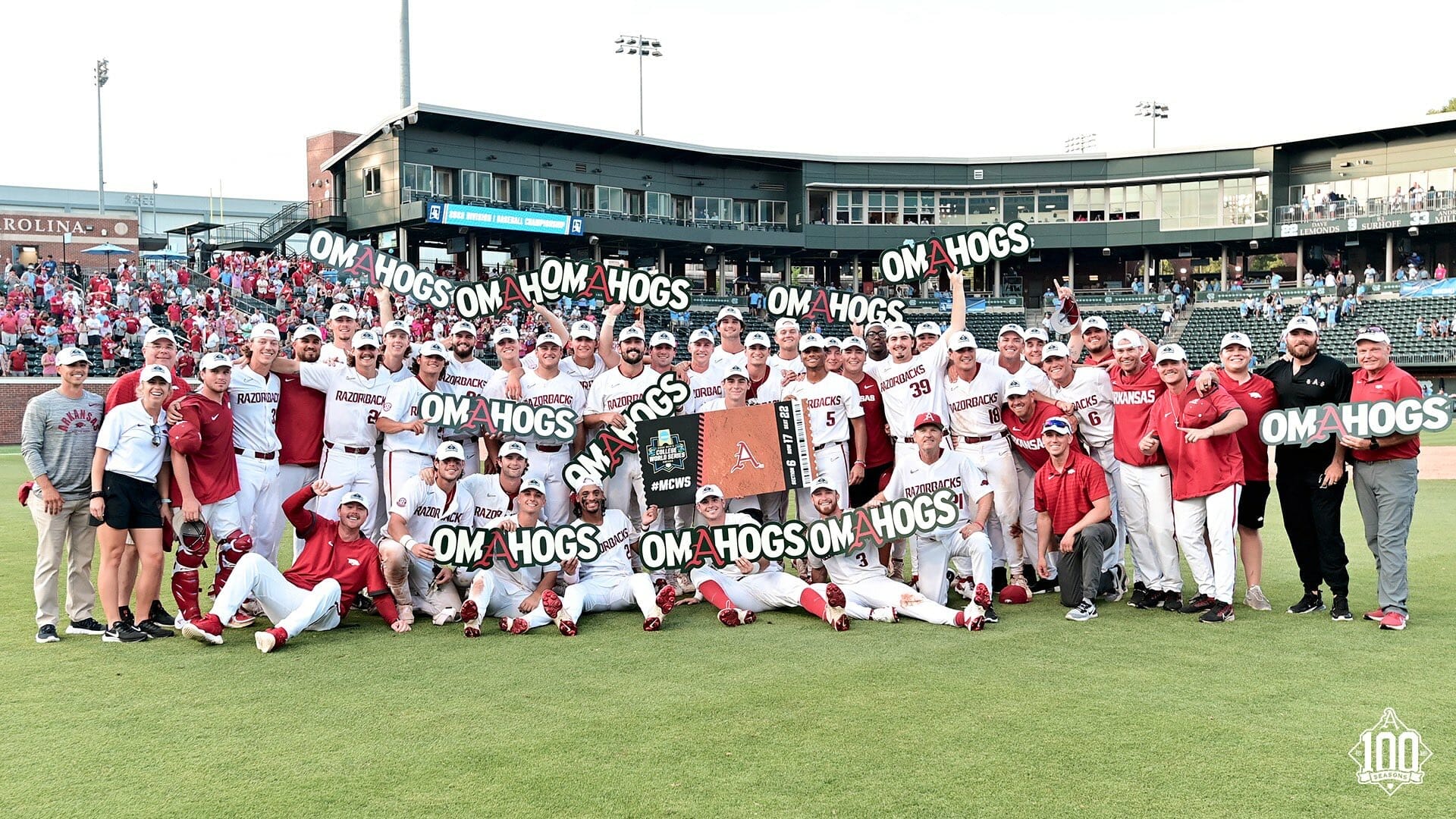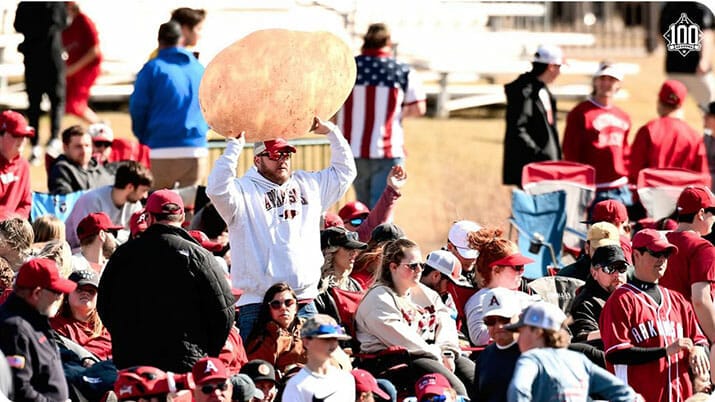

Uh oh...
It appears that you're using a severely outdated version of Safari on Windows. Many features won't work correctly, and functionality can't be guaranteed. Please try viewing this website in Edge, Mozilla, Chrome, or another modern browser. Sorry for any inconvenience this may have caused!
Read More about this safari issue.

It is a fortress. A king’s castle. A home base, and a hideout.
It has been a pirate ship, at times, or a wizard’s lair. A hobbit’s house. A spaceship.
Its official name is “Point 7,” though most locals know it simply as The Wilson Park Castle, and the structure, located at the northeast corner of Wilson Park has inspired multiple generations of Fayetteville children, teenagers, and adults for nearly 40 years.

Detail of one of the castle pillars
Construction on the castle began in the summer of 1979 by artist Frank Williams, who was working with the Arkansas Arts Council on a new (at the time) Craft’s Apprentice Program.
Williams was born in St. Louis and studied as an undergrad at Southwest Missouri State University before coming to Fayetteville to study in the UA’s MFA program.
We recently stumbled on a fascinating post on his website about the process of creating the castle, now one of the most recognizable landmarks in the city.
Williams was approached by the parks board to redesign a spring house, next to a youth baseball field adjacent to the park. Williams had about two weeks to come up with a design for the project, and what he came up with in that time has become one of the most iconic structures, and generally magical sites in the city.
“The springhouse was an eyesore and the spring-fed stream coming from it was choked with weeds and watercress,” he recalled in an address he created for the 25th anniversary of the creation of the castle. “It was in an open area next to the ball diamond and used by the players and their fans to park their cars and trucks and maybe have a cool one in between innings.”

One of the many sculptural elements of the castle
As he tells it, the project was supposed to take about 3-4 months, but ended up taking him more than a year to complete. There were budget concerns, he said, and city officials at the time told him there wouldn’t be much (if any) in the way of funds for maintenance for the project.
“I felt that to the best of my ability I would build something durable, but in “faux” decay! New, but reflecting antiquity, and hopefully it would be miraculously enhanced by wear, tear, and vandalism as it reverted to nature,” he said.
Inspired by the architecture of Antoni Gaudí, the castle is made from mostly native stone and concrete, with ceramic tile, colorful stones, and oyster shells providing mosaic accents to the design.

More public parks in Northwest Arkansas can be found here.
Join the Conversation
Leave a Comment
One response to “The Castle at Wilson Park in Fayetteville”
 Leave a Reply
Leave a Reply
We do the work.
You check your email.
Sign up for our weekly e-news.
Get stories sent straight to your inbox!










 Leave a Reply
Leave a Reply
[…] kiddo that loves to dress up and make-believe? Take them to a castle! One perfect place to play is Wilson Park in Fayetteville. Sitting atop an active spring is a sculptural castle (created to hide the […]